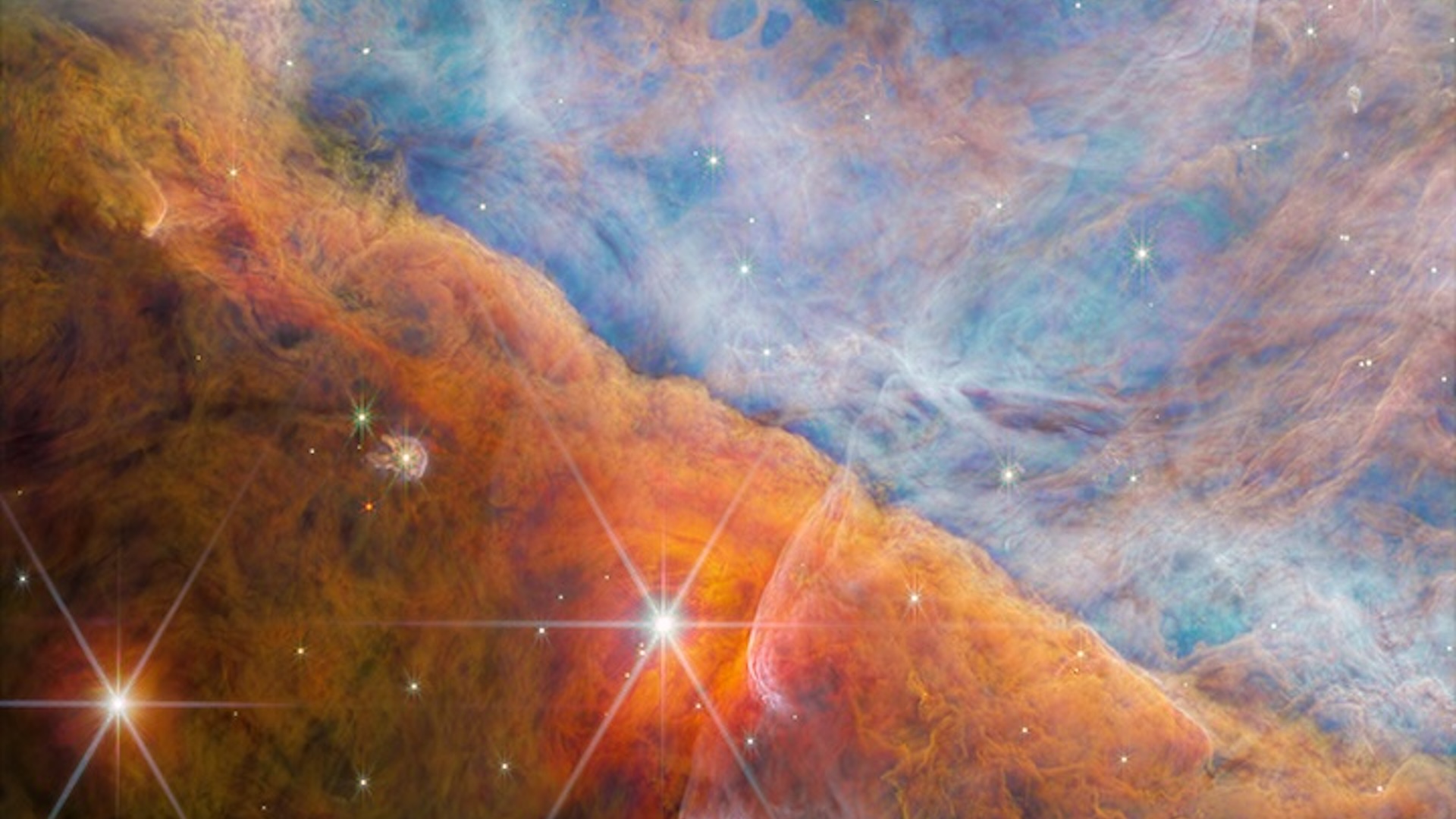
Mysterious pairs of “rogue,” Jupiter-size objects may have arisen from embryonic stars, a new study suggests. The theory could explain some characteristics of these Jupiter-mass binary objects (JuMBOs), such as why members of each pair are so widely separated, but more data is needed to confirm the idea.
The James Webb Space Telescope spotted these JuMBOs in the trapezoid zone of the Orion Nebula. Each JuMBO pair comprises two gas giants, each between 0.7 and 30 times the mass of Jupiter. These “rogue” planet partners have been found orbiting each other — but not a parent star — at a distance of about 25 to 400 astronomical units, or 25 to 400 times the average distance between Earth and the sun.
Astronomers have proposed several ideas for how these mysterious duos form. One theory is that they were flung simultaneously from their home systems by a passing star, although some scientists believe this is very unlikely. Another idea is that JuMBOs emerged around a star but their gravities tug them toward each other and out of orbit during close encounters.
However, all of these theories assume that JuMBOs originate from planets that have already formed. In contrast, the new study proposes a radically different idea: that the Orion Nebula’s JuMBOs aren’t preexisting pairs of planets but rather the hearts of embryonic stars.
A star forms from a massive and dense cloud of gas and dust called a pre-stellar core. As a core grows, it collapses under its own weight, forming a baby star called a protostar; if the core fragments, it could form twin or even triplet stars.
Related: James Webb Space Telescope smashes its own record to find the earliest galaxies that ever existed
But such nurseries aren’t serene places. They could be surrounded by massive stars — just as the Orion Nebula is — which produce incredibly high-energy radiation. Twenty years ago, the astronomers Anthony Whitworth and Hans Zinnecker had theoretically shown that these powerful photons could pummel pre-stellar cores, stripping away their outer layers. At almost the same time, a compression wave would push against the core’s center, compacting it into a smaller-mass object. The result was that the star itself transformed into a planet or a brown dwarf, which is sometimes called a “failed star” because it’s not massive enough to fuse hydrogen to helium.
The new study’s authors knew of Whitworth and Zinnecker’s study and wondered whether the same mechanism could create JuMBOs, too. They “noticed that the JuMBOs[‘] separations were similar to those of stellar binary systems with two stars of similar or higher mass to the Sun,” Richard Parker, a senior lecturer in astrophysics at the University of Sheffield in the U.K. and senior author of the new study, told Live Science in an email.
That makes them unlike most brown dwarf twins elsewhere in the Milky Way, which are separated by only a few Earth-sun distances, Parker said, so a different mechanism must be involved. “We supposed that the core was already fragmenting to produce a stellar binary, but then the radiation from the massive star removed a lot of the mass,” he added.
To test this idea, Parker and Jessica Diamond, a graduate student at the University of Sheffield and lead author of the study, turned to theory. First, they created a bunch of virtual pre-stellar cores, each with a mass within the range spotted in nature. They also assumed the core would split into two, and selected a value for the spacing between the siblings — again, from values observed among star pairs. Then, they applied Whitworth and Zinnecker’s calculations to the virtual cores. This essentially pounded them with high-energy radiation from a nearby massive star, eroded the core’s cloak and compressed its center.
Diamond and Parker found that the resulting paired objects had masses and separation distances very similar to the JuMBOs’. The findings suggest that, with a strong push of radiation from neighbouring stars, developing binary stars could become pairs of rogue planets, providing an explanation for how the JuMBO pairs formed. The results of their study were published Nov. 5 in The Astrophysical Journal.
More data, such as evidence of JuMBOs in other star-forming complexes with massive stars, would help to confirm the hypothesis, Parker said. In his opinion, one example of such a place is the Scorpius-Centaurus association, a conglomeration of thousands of stars that make up parts of the constellations Scorpius and Centaurus.
In any case, Parker doesn’t rule out JuMBO formation through other routes. “I always have a hard time in thinking there is only one way to form objects like these,” Parker said. “We know so little about them that it’s feasible they may form from a variety of ways.”
